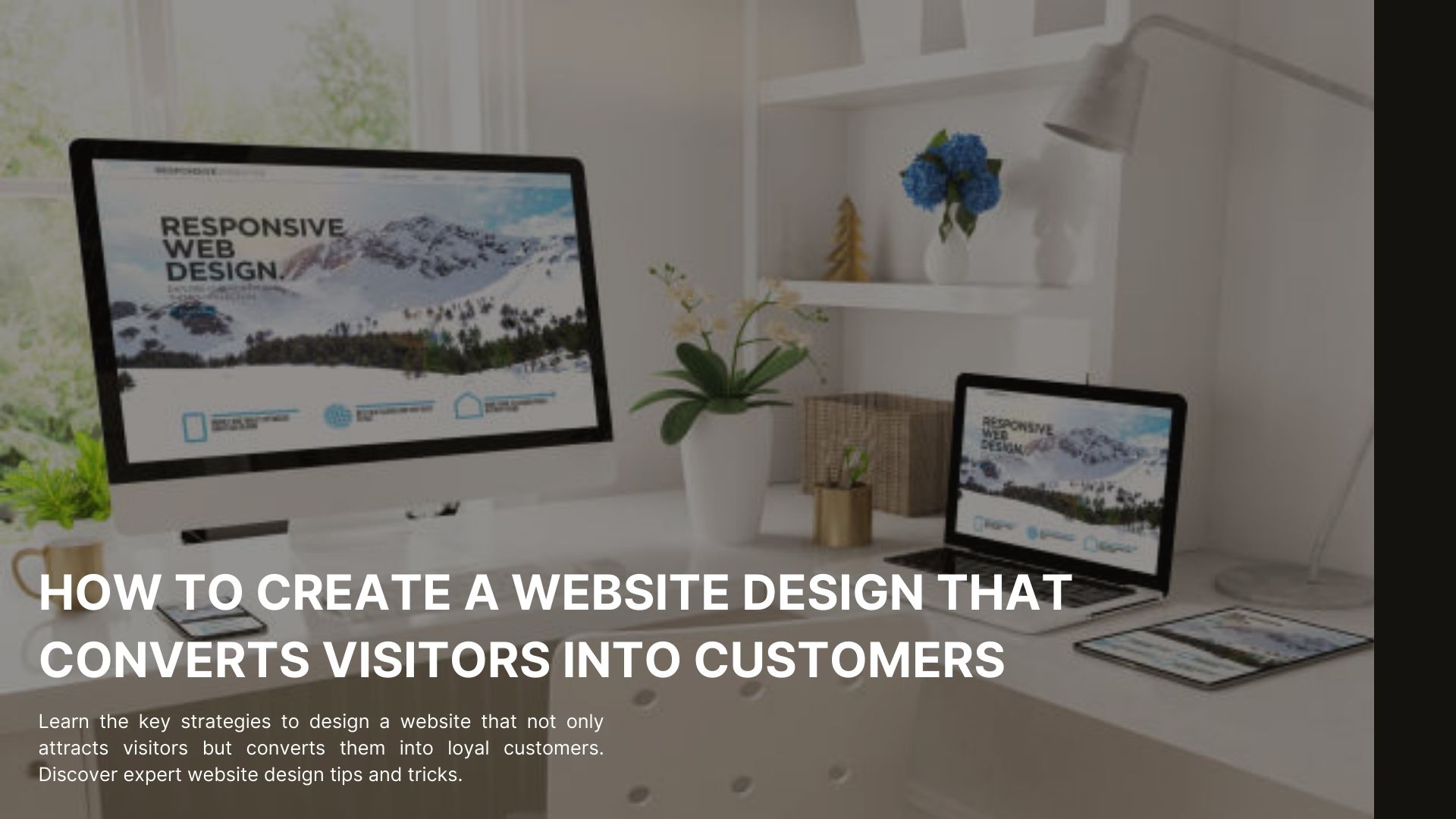
In today’s digital age, your website is often the first interaction potential customers have with your brand. A well-designed website can make all the difference in converting visitors into loyal customers. Website design plays a pivotal role in shaping the user experience and influencing purchasing decisions. Whether you're an established business or a startup, understanding how to design a website that drives conversions is crucial for long-term success.
This blog will guide you through the key elements of creating a website design that not only captures attention but also encourages visitors to take action. We’ll discuss essential design practices, the role of a web development company, and how web design and development work together to boost conversions.
The Importance of Website Design in Conversions
Your website's design is far more than just its appearance. It’s an essential part of the customer journey. A website that is difficult to navigate, slow to load, or visually unappealing can drive visitors away within seconds. On the other hand, a well-structured, visually pleasing, and user-friendly website will keep visitors engaged and increase the chances of conversion.
Whether you're selling a product, service, or idea, the design of your website must facilitate easy navigation, quick load times, and clear calls to action (CTAs). A web development company can help you create an experience that blends form with function, resulting in an intuitive design that makes visitors feel comfortable and confident in making decisions.
Key Elements of Website Design That Drive Conversions
To convert website visitors into paying customers, your design needs to focus on certain essential elements. Let's explore these components and how they can be optimized for better conversions.
1. Mobile-First Design
With the growing use of mobile devices for internet browsing, a website design that isn’t mobile-friendly can severely hurt your conversion rates. A mobile-first design ensures that your website performs seamlessly across all devices, especially smartphones and tablets. This approach is no longer optional, as a significant portion of traffic comes from mobile devices.
Working with a reputable website development company will allow you to create responsive, mobile-friendly designs that provide an optimized browsing experience. Mobile optimization is crucial for improving user engagement and ultimately increasing conversions.

2. Fast Loading Speed
Site speed directly impacts user experience and conversion rates. Slow websites frustrate visitors, often causing them to leave before exploring further. Research shows that a delay of even a few seconds in loading time can increase bounce rates significantly. A web development company can help streamline your website’s backend and optimize assets (such as images and scripts) to improve page loading speed.
3. User-Friendly Navigation
A simple, intuitive navigation system is crucial for keeping visitors on your website and guiding them toward conversion. If users struggle to find what they’re looking for, they are more likely to leave. Focus on clear menu structures, well-organized content, and minimal distractions. Ensure that important information such as product details, pricing, and contact information is easy to access.
An experienced website development company will design navigation that caters to your users’ needs, offering a smooth browsing experience that encourages further exploration.
4. Clear Calls to Action (CTAs)
CTAs are one of the most important elements in website design when it comes to conversions. A CTA is a prompt that encourages visitors to take a specific action, such as signing up for a newsletter, making a purchase, or requesting more information. For CTAs to be effective, they must be strategically placed, clearly visible, and compelling.
Use action-oriented language in your CTA buttons and ensure they stand out visually from the rest of the content. The color, size, and placement of these buttons can make a significant difference in conversion rates. A web design and development expert can help create CTA elements that guide visitors through the sales funnel seamlessly.
5. High-Quality Visuals and Content
First impressions matter, and the first thing visitors notice when they land on your website is its design and visuals. High-quality images, videos, and graphics can significantly enhance the appeal of your website and create a stronger emotional connection with your audience. However, it's important that these visuals align with your brand identity and messaging.
Content is just as important as visuals in website design. Engaging, informative, and persuasive content can help build trust with your audience, making them more likely to take action. Optimizing your content for SEO can also help attract organic traffic, increasing the chances of conversion.
6. Trust Signals
Trust is a critical factor in convincing visitors to become customers. Including trust signals on your website, such as customer testimonials, reviews, case studies, and security badges, can increase credibility and encourage visitors to make a purchase or fill out a contact form. A web development company can integrate these trust elements into your website design seamlessly, ensuring that visitors feel confident about their decision to engage with your brand.
7. Simplified Checkout Process
For e-commerce websites, the checkout process is often where visitors abandon their carts. A lengthy or complicated checkout process can turn potential customers away. Streamline your checkout process by offering guest checkouts, minimizing form fields, and offering multiple payment options. Additionally, make sure customers can easily see the total price, shipping costs, and delivery times.
A website development company can create a smooth, user-friendly checkout experience that reduces friction and boosts conversion rates.

The Role of Web Design and Development in Conversion
Creating a website that converts visitors into customers isn’t just about how it looks—it’s about how it functions. The combination of great web design and robust website development is essential for creating a seamless user experience. Web development experts ensure that the website is technically sound, fast, and secure, while website design experts focus on the visual appeal and user interface.
Together, these two disciplines work hand-in-hand to deliver a website that not only attracts visitors but also converts them into loyal customers. Whether you’re working with a web design and development team or handling things in-house, it's essential to align these components for the best results.
Conclusion
In conclusion, designing a website that converts visitors into customers is no easy task, but it is crucial for the success of any online business. By focusing on mobile optimization, fast loading speed, user-friendly navigation, clear CTAs, quality visuals, trust signals, and a simplified checkout process, you can create a website that not only captures attention but also drives action.
Collaborating with a skilled web development company ensures that your website is technically optimized, while a professional website design can provide the visual appeal and structure necessary for a seamless user experience. Together, web design and development can help you create a website that doesn’t just look great but also delivers measurable results in terms of conversion rates and business growth.